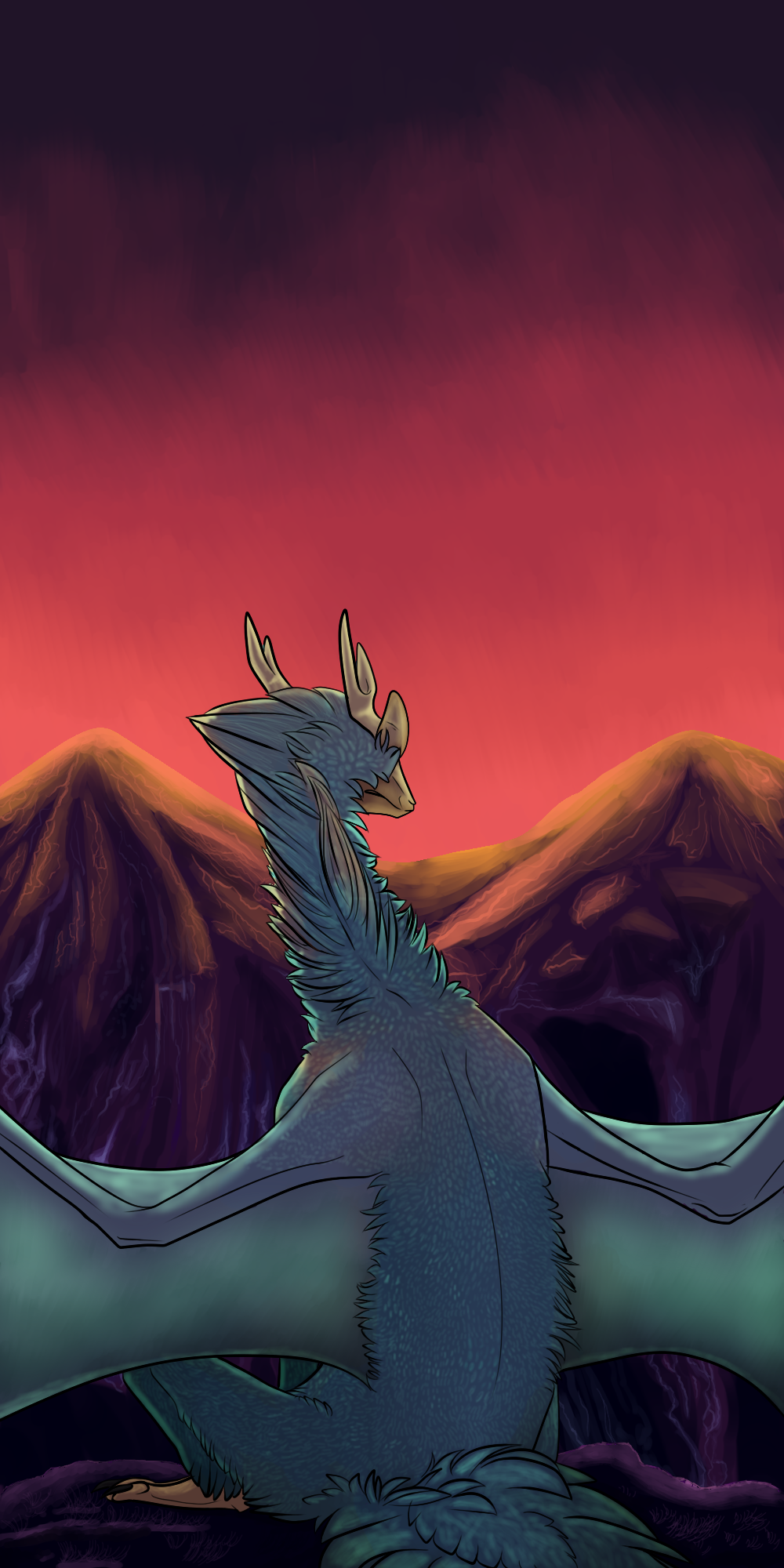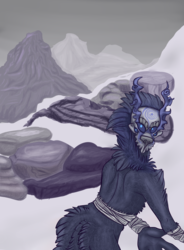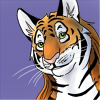Sign In
CloseAhaaaa wow okay I'm not sure if this is the best thing to put up on Weasyl because this was an adoptable contest entry, and I had to draw a picture of someone's character and then make a tryout for this original species that belongs to another person (who I lav forever) SO YEAH COPYRIGHT THIS GIRL ISN'T MINE. The freakin fur took such a long time. And it looks like a bunch of little pebbles. I'm so mad. Ah if you're seeing this, could any of you weasylians give me some advice on how to shade fur and feathers? I've studied so many different tutorials on dA, but to no avail. What I can't do is get the correct, pointed-teardrop shape. I'm lazy. I want to make this shape with a single brush stroke, not outline it like a box, you know? Ehhhh I guess I'm just going to have to put in more effort jesus.
I paint mountains too much, have you noticed? I am so proud of those mountains though, and you can't even see the majority of them.
Janneh belongs to kaylimepie on dA (I think)
Kytkins belong to forrgotenrose on dA
Art is and always will be miiine
Submission Information
- Views:
- 213
- Comments:
- 1
- Favorites:
- 1
- Rating:
- General
- Category:
- Visual / Digital






Link
angeltigress03
This is a great piece. You have lots of good contrast, good lighting, the color scheme is cohesive and pulls together real well, and the linework in the foreground is crisp and clean. I like that.
You did mention the critter is not yours. This may be moot because of that but please bear with me. Wing membranes tend to connect with the tail/legs area to allow them to catch air better. And the "arms" in this case are not quite similar. The left arm (your right) is bigger than the right (your left). I don't really see any other anatomical snags, especially since this is a fantasy critter. It all seems very well thought out though.
I will say the amount of small detail on the critter in the foreground takes away from the picture a bit in the large view. The definition on the head and neck is good. In retrospect perhaps going so detail oriented on the back fur might have been a bit much. What should have been done was to pick out specific spots and applying detail there. Fur and human hair share similarities in art in that they are better drawn and defined in clumps and individual shapes at times rather than trying to define every individual bit of hair. The edges were a good choice and perhaps the middle a little. As it is now, it looks a little on the flat side. However you mentioned that you were looking on how to shade fur and feathers so I will run with that :3
As far as painting fur and feathers, what better way to check out how fur and feathers look than to have some real life sources on hand? Try pulling up pictures of different animals and birds and studying them; how the fur runs on the body, where it starts and stops, and how they are defined.. Animal Pictures Archive is a good place to start. You can also use Google Images. Just bear in mind that pictures there are copyrighted so you might be careful on using them as reference but there is no shame in using them for study.
The trick is not necessarily detail in shading, but where to put the detail and definition in shading. Droemar's Scale Tutorial should give you some good advice. Just because it's on scales doesn't mean you can't apply practical knowledge to fur and feathers.
Fur, as I mentioned is similar to human hair. It is better defined in clumps with some mild detailing rather than in individual strands. you'll drive yourself insane trying to make anything look that defined except in extreme closeups. Jen "Jocarra" Philpot's fur tutorial found here, is a good example of that. And it's got some pretty good techniques to share.
While not my favorite on how the rest of the fur is done in here, Silvermoonfox's tutorial really explains the whole clump thing well. And there are times when you'll see that reflected in photographs of animals.
And finally This Tutorial by Stalcry give some good tips on how to define fur without having to go all out crazy.
Sadly, I have no tips on painting feathers, but the same principles apply to many degrees. Downy feathers are almost fur like in distant appearance, and if you study primary feathers in close proximity you'll see how all the little individual barbs join together to make one big feather.
Overall, the pic's beautiful. I hope this might have been useful and I apologize for the giant wall o' text.